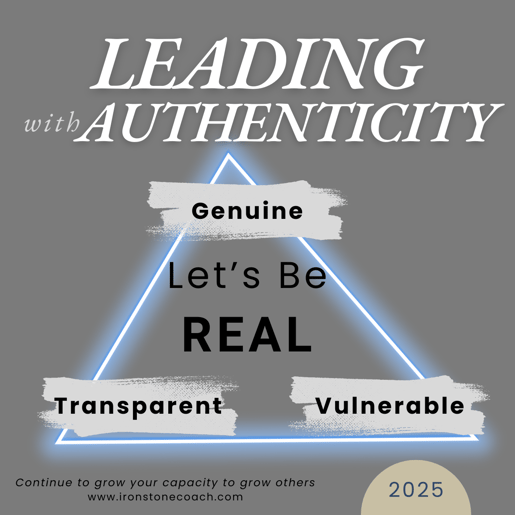Authenticity in Leadership
Let's Be Real
Michael Brown
3/2/20252 min read


Many common frameworks about Authentic Leadership are framed around Transparency, Vulnerability, and being Genuine.
With Authentic Leadership, your personality and perspective shines through rather than being a cookie-cutter robot, suit-in-a-seat. Authentic Leadership can be viewed as Why You Matter and are a great fit for the position, as well as Why do others want You personally to be the Leader.
It’s about being Real/Realistic. Real knowledge, Real interest. Real connections/relationships. Faking things is hard and superficial. To truly demonstrate the effect character and competence we discussed earlier you’re going to need to be authentic as well. It's all inter-related.
Being “Authentic” is not an excuse to be however you feel like, or carry an attitude of ‘this is just how I am so others have to deal with it’, or ‘others should recognize what’s really in my inside or my intent.’
Authenticity is an opportunity to demonstrate and let others experience your true self, your motivations, perspectives, and values. Much like your character and competence, your authenticity will be apparent through your consistency of behaviors.
When we talk about being Genuine, we’re referring to being Open, Honest, Sincere, Consistent, and Clear in your Intentions. How do people routinely experience you, how you show up habitually to others. Being many versions and reacting in so many different ways is confusing for yourself and others. Being genuine is an element where alignment of personal and work values must be considered. This is a part of your character, it’s who you are.
When we talk about being Vulnerable, we’re referring to being Modest, Humble, Empathetic, Caring, and Self-Aware to develop yourself confidence. This is also a key area to be receptive to and incorporate feedback and input from others. The vulnerability component is also where we can give attention to maximize personal strengths, improve personal weaknesses, and pursue/fulfill your Intrinsic motivators. Additionally, a more vulnerable approach also allows for stronger connections with people which will support trust, confidence, and appeal for the leader.
When we talk about being Transparent, we’re referring to sharing the how and why decisions are made. Explain thought processes, efforts made, and considerations evaluated. Be willing to receive feedback and make adjustments to incorporate feedback received. Leaders are not always right and leaders must be aware of the impact their decisions and behaviors have on others. Being transparent also provides the opportunity to gain buy-in, have a common language, and shared awareness/understanding. When there is transparency, not every granular detail or sensitive information has to be shared, but it allows a better flow of information and makes people feel safe enough to say they have an idea, a concern or disagreement, they don't know or made a mistake. The improved communication levels and inclusiveness with transparency will tremendously enhance clarity, efficiency, and innovation as well.
IRONSTONE COACH
Supporting Professionals In Their Efforts To
Build Capacity
Resolve Complex Issues
Succeed in a New Role
© 2024 and Beyond.
All content herein is intellectual property of Ironstone Coach. All rights reserved.
Stock photo/imagery provided by unsplash.com & pexels.com
Veteran Owned Business
State of California
Disabled Veteran Business Enterprise (DVBE)
Certification ID 2040298




